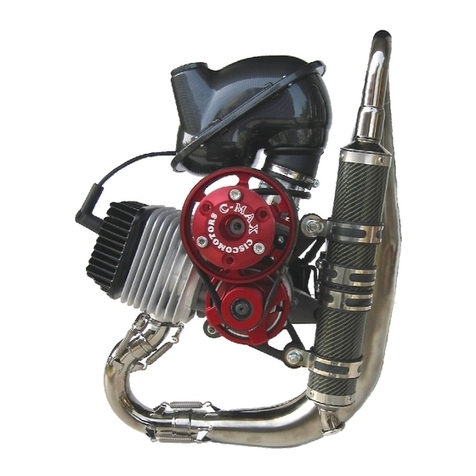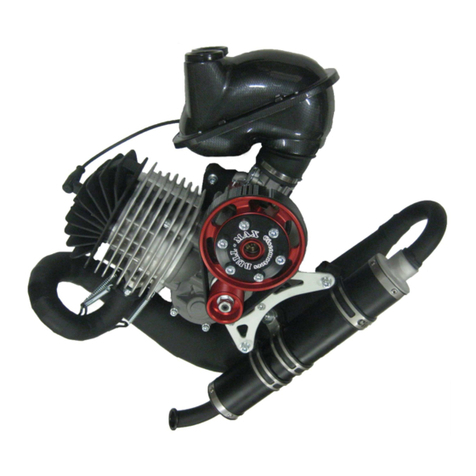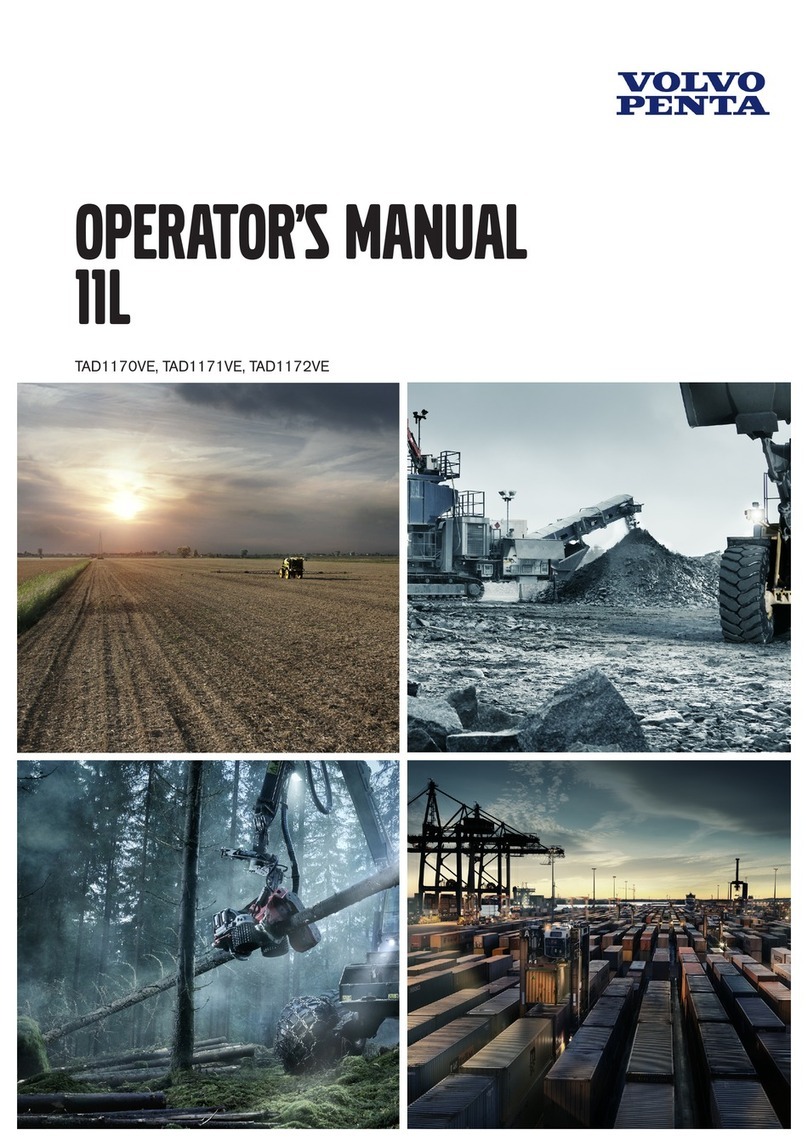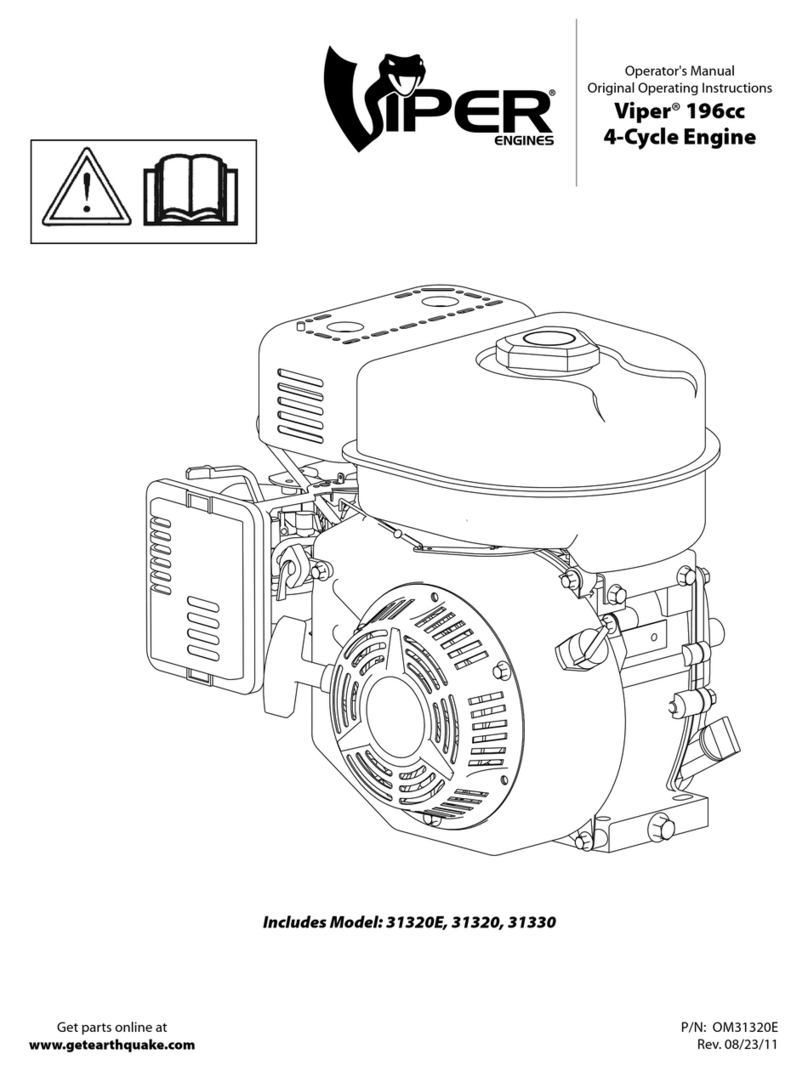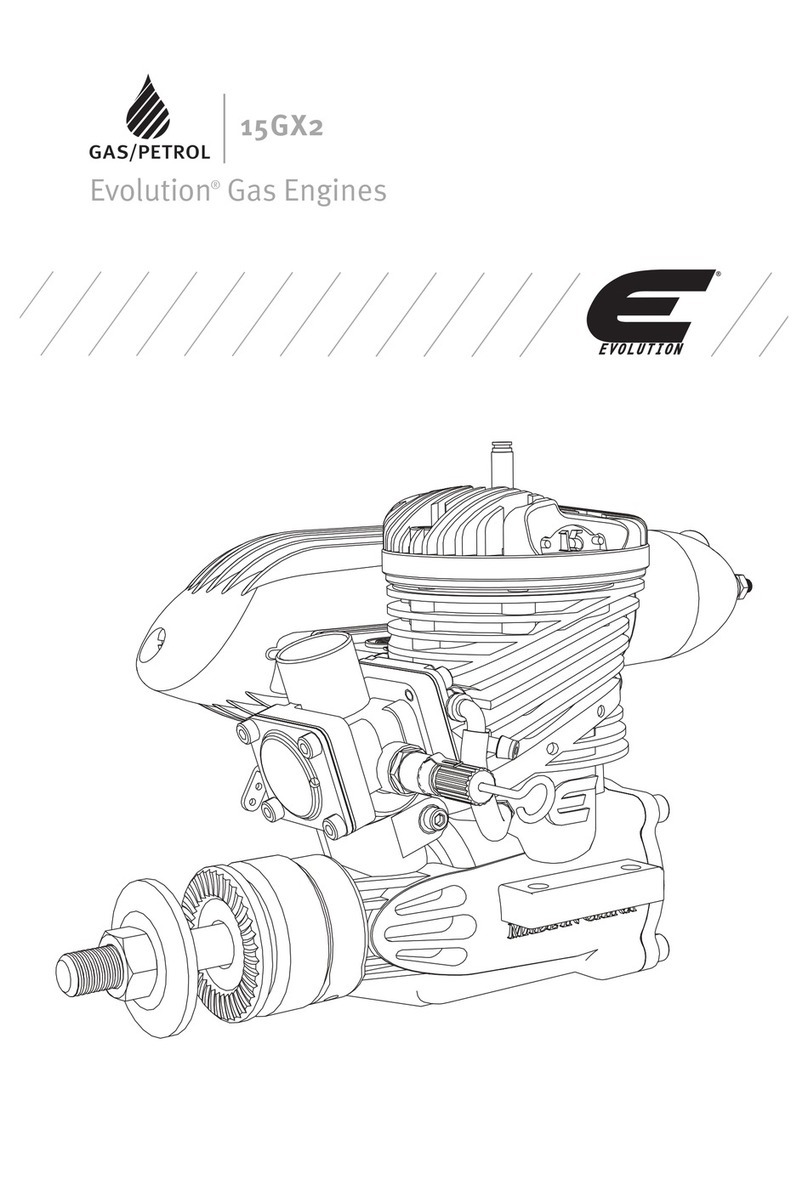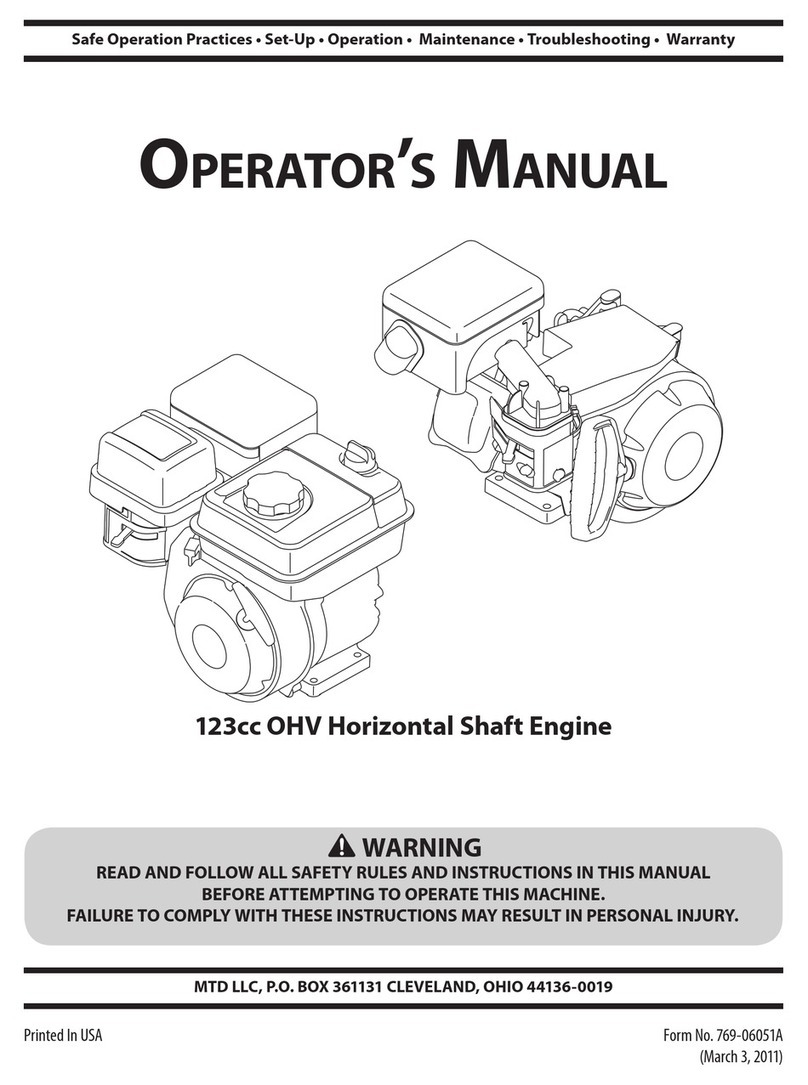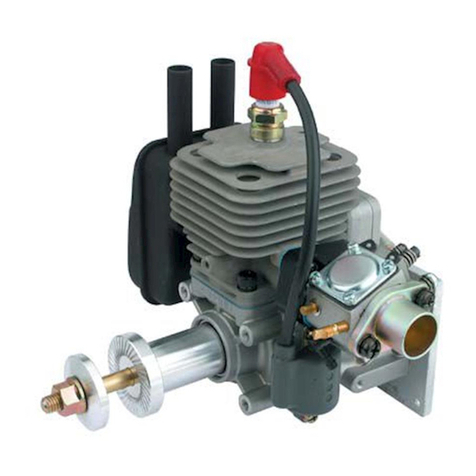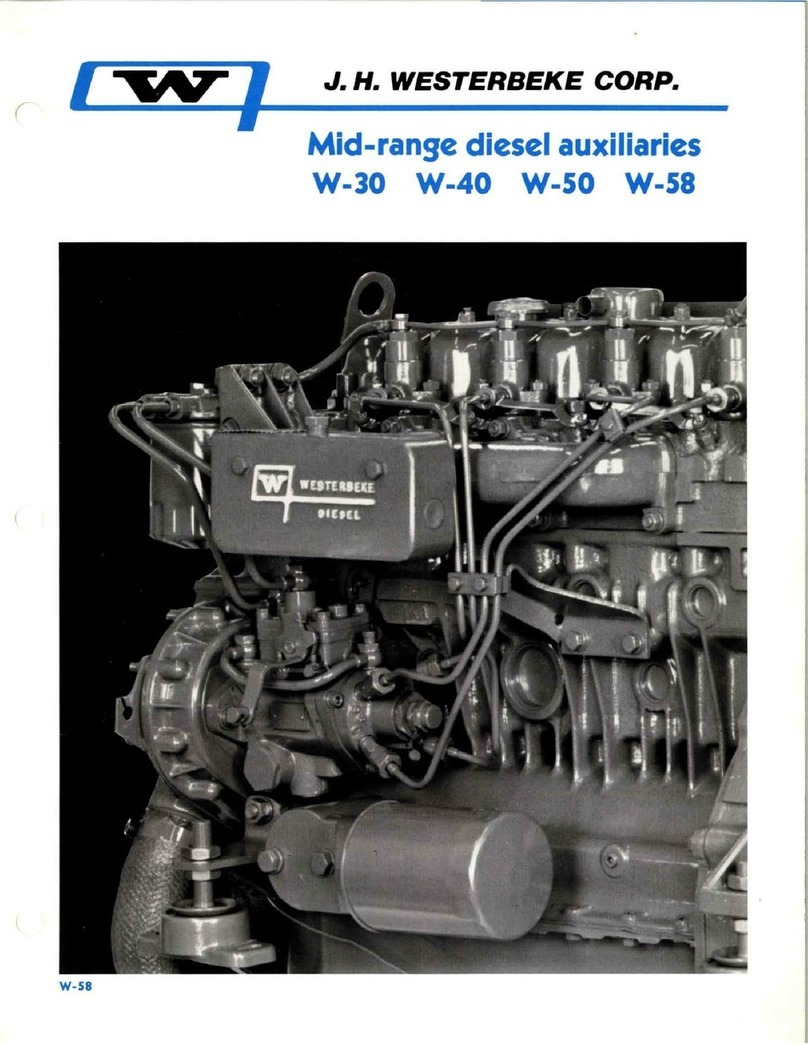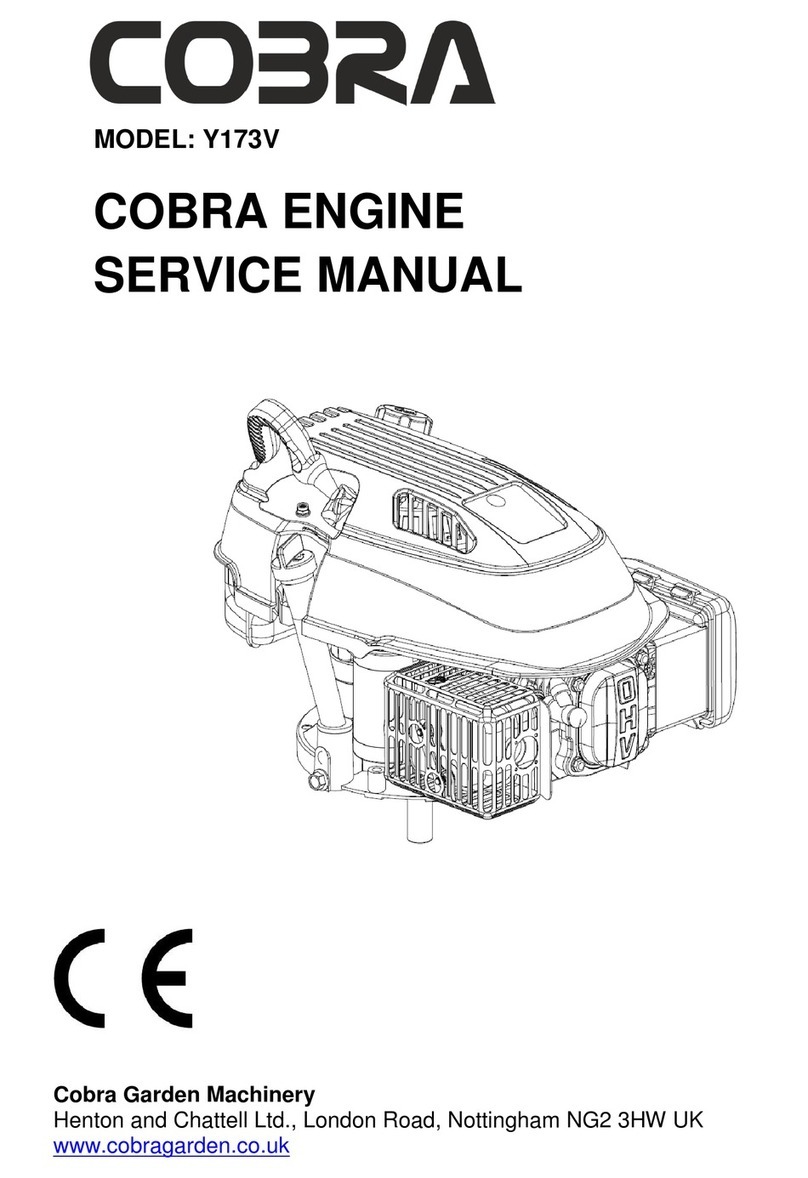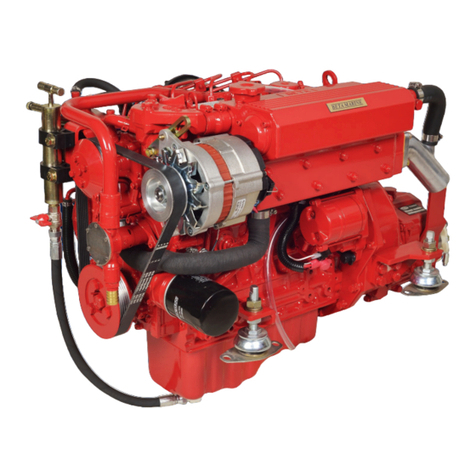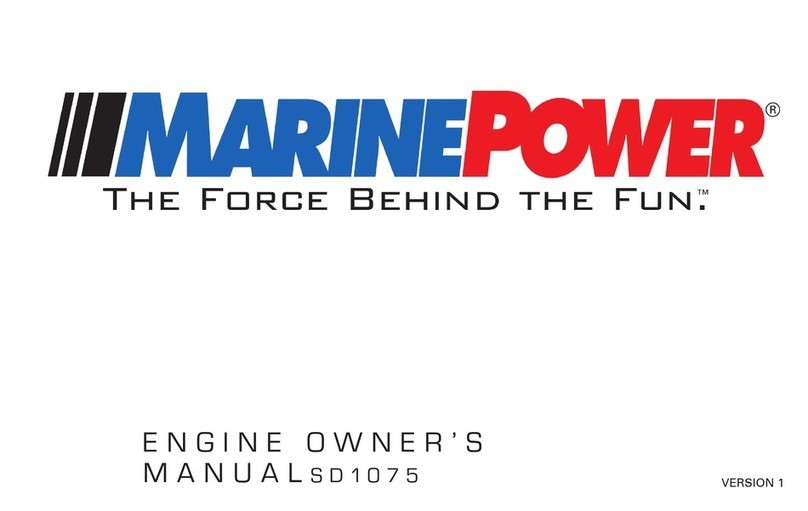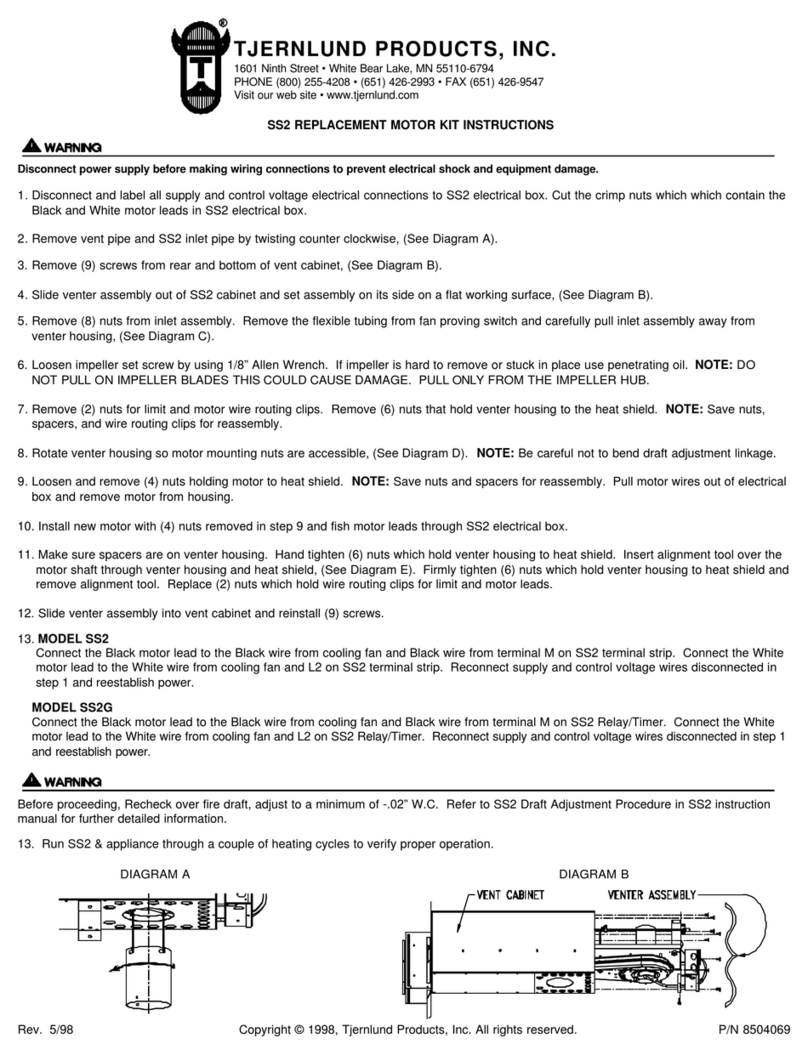Ciscomotors SNAP 100 User manual

SNAP 100 Rel.3/2007
MAINTENANCE MANUAL
All information in this publication is based the latest product information available at the time of
approval for printing.
CISCOMOTORS reserves the right to make changes at any time without notice and without
incurring any obligation.
No part of this publication may be reproduced without written permission.
Ciscomotors 2004

INDEX Pag.2
1. OPERATING INSTRUCTIONS Pag. 3
• 1.1 Basic operation Pag. 4
2. SPECIFICATIONS Pag. 6
• 2.1 Engine installation on chassis Pag. 6
• 2.2 Tecnicals characteristics Pag. 7
3. MAINTENANCE Pag. 8
• 3.1 General service information Pag. 8
• 3.2 Routine cleaning Pag. 8
• 3.3 Maintenance schedule Pag. 9
4. STORAGE Pag. 10
5. SPARE PARTS & EQUIPMENT Pag. 11
• 5.1 Spare parts Pag. 11
• 5.2 Equipment Pag. 12
6. ASSEMBLY/ DISASSEMBLY Pag. 13
• 6.1 Carburettor Pag. 13
• 6.2 Termical Group Pag. 14
• 6.3 Starter Pag. 20
• 6.4 Silencer Pag. 21
• 6.5 Sponge filter Pag. 22
• 6.6 Propeller hub Pag. 23
• 6.7 Ignition coil Pag. 24
• 6.8 Reducer Pag. 26
7. CARBURATION REGULATION Pag 27
8. TROUBLESHOOTING Pag. 28
9. TORQUE VALUES ENGINE Pag. 29

Pag.3
1. OPERATING INSTRUCTIONS
FUEL
• Snap 100 has a two-stroke engine that
requires a gasoline-oil mixture.
• Use gasoline with a pump octane
number of 92 or higher .If “knocking” or
“pinging” occurs, try a different brand of
gasoline or a higher octane grade.
• Premix gasoline and oil in a ratio of
40:1. Prepare the fuel mixture in a clean
container fig.1 , and shake until
thoroughly mixed before filling the fuel
tank.
• USE A GOOD QUALITY OF
SYNTHETIC 2-STROKE OIL
CAUTION:
To much oil will cause excessive smoking and
spark plug fouling. Too little oil will cause
engine damage or premature wear. Mix fuel
in a ratio of 40 parts gasoline to 1 part oil
(40:1)
• Vegetable oils separate from gasoline
more easily than mineral oils, especially
in cold weather. It is advisable to use
synthetic oil.
CAUTION:
• Do not mix vegetable and mineral based
oils.
WARNING
• Gasoline is extremly flammable and is
explosive under certain conditions.
Perform this operation in a well-
ventilated area with the engine
stopped. Do not smoke or allow flames
or sparks in the area where gasoline is
drained or stores and where the fuel
tank is reflued.
FUEL 92/98 octane Synthetic oil
liters cl
0,5
1
2
3
4
5
10
0,125
0,25
0,50
0,75
10
1,5
25
fig.1

Pag. 4
1.1 BASIC OPERATION
• In the 2-stroke motors like the Snap100, is of absolute importance the corrected
carburation to avoid seizure to the piston (not covered from guarantee).
Start the Engine
WARNING
• Never run the engine in an enclosed
area. The exhaust contains poisonous
carbon monoxide gas that can cause
loss of consciousness and may lead to
death.
• Attempting to start the engine without
the riducer provokes the outbreak of
the clutch and can cause injury or
damages.
• Never run the engine without
propeller.
• The starter attempt can carry to the
spin of the propeller and therefore to
possible lesions.
• The motor running emits disturbs
electromagnetic.
Cold Engine Starting:
1. To carry in pressue the circuit of
the gasoline, to help itself
pressing the push-button (fig.2).
2. To appeal the starter and to
delicately pull iust after the harder
point (to try repeatedly for being
sure).
3. To pull the grip with energy,
without throttle in. .
4. In case of lacked starter to repeat
the procedure without to
accelerate .
5. Allow the engine to warm up for
at least 2 minutes before riding
off,
6. . Slowly increase rpm and don’t
grip the throttle warming the
engine is important to prevent
cold seizures
Warm Engine Starting:
1. To appeal the starter and to delicately
pull hardly after the harder point
2. To pull the grip with energy, without
throttle in.
Stopping The Engine
1. Depress and hold the engine stop button
until the engine stops completely
Break-in Procedure :
Following proper break-in procedure helps
censure that some of the most important and
expensive components on your new Snap100
will provide maximum performance and service
life. (Also follow proper break-in procedure for a
newly rebuilt engine)
1. Do not hold the throttle in one
position for more than a few
seconds. It’s better to roll the
throttle on and off, without
gaining too much,height and
forcing too much at the motor.
2. Use the motor for features of 10
minutes at a time and to leave to
cool it.
3. After two hours of use or
approximately 10 liters of
gasoline the motor should be
broken in.
4. This same procedure should be
followed each time
• Piston is replaced
• Cylinder is replaced
• Crankshaft or crank bearings are replaced

Pag. 5
Fig.2

Pag. 6
2. SPECIFICATIONS
2.1 ENGINE INSTALLATION ON CHASSIS
Fig.3
1. Engine stop connector 2. Throttle cable 3. Propeller
4. Support engine 5. Manual starter
CAUTION:
To use antivibrating of optimal quality not superior 70s

Pag.7
2.2 TECHICALS CHARATTERISTICS
Motor SNAP 100S
Type 2 strokes cooled to air
Disposition cylinder Monocylinder vertical
Bore max 51mm
Stroke max 47mm
Displacement 96 cc
Compression ratio 11,2 : 1
Maxim Power 12,5 kw (17cv) 9400 rpm
Max Torque 14 Nm 8800 rpm
Lubricating reducer 15ml
Electrical sistem
Ignition Elettronic ignition
Rotor Variable Advance
Spark plug standard Ngk BR9HS / B9HS
Winter spark plug Ngk BR8HS / B8HS
Starter Manual
Carburettor
Type Walbro WB32(Ciscomotors) / Dell’orto
Walbro* Setting screw min 1/4
Walbro* Setting screw max 1
Trasmission
Clutch Type Centrifuge 3 shoe
Reduction Gears helicoidal
Reduction ratio 1/3,63
Exhaust
Type Expansion Chamber
Silencer Glass wool
Support engine
Type N.4 silent-block
*The standard carburation
Temperature 10°c
P 1024 Mb
UR 50%
Altitude (S.L.M.) 50 m

Pag. 8
3. MAINTENANCE
3.1 GENERAL SERVICE INFORMATION:
• Wear gloves and glances when you make the maintenance;
• Do not perform maintenance while engine is running. Injury to your fingers, hands or head
may result ;
• Perform maintenance on firm, level ground, using hard workstand, and not directly on
chassis;
• Always install new gaskets, o-rings, piston pin clips, snap rings ect..when disassembling
• When tightening bolts, nuts or screw, start with the larger diameter or inner fasteners, and
tighten them to the specified torque using a criss-cross pattern;
• Use genuine Ciscomotors parts when maintenance your Snap100
• Clean parts in non-flammable cleaning solvent when disassembling. Lubricate any sliding
surface, O-rings and seals before reassembling.
W
WA
AR
RN
NI
IN
NG
G
Gasoline or low flash point solvents are highly flammable or explosive and must never be
used for cleaning parts . Fire or explosion could result.
• After reassembling, chek all parts for proper installation and operation
NOTE:
• Specification are listed chapter 2.
3.2 ROUTINE CLEANING
• If the SNAP100 were only little dirty to clean up it with clean dusts cloth without
dissolvents
• If the SNAP100 were much dirty to clean up it with biodegradable detergents and not with
dissolvents, lubricate where is nececessary.
Number engine Number reducer

Pag. 9
3.3 MAINTENANCE SCHEDULE
FREQUENCY INSPECT REPLACE
Before and after each use All screw nuts, bolts correctly
tigthen, silent-block in, and
check carburation.
Every 100 hours Cylinder head decarbonizing
and cleaning sponge filter Complete piston
Reducer’s lubricant
Every 200 hours Diameter clutch, usury of the
bell clutch, and glass wool of
the silencer
Crankshaft bearing ,bearing
reducer, oil reducer, crankshaft
seals, thermical group,
connecting rod.
Each year All rubber and plastic
components. Fuel diphragms of carburettor ,
spark plug.

Pag. 10
4. STORAGE
Extended storage such as for winter, requires that you take certain steps to reduce the effects of
deterioration from nonuse of your Snap100. In addition necessary repairs should be made BEFORE
storing your Snap100: otherwise these repairs and clean may be forgotten by the time your Snap100
is removed from storage.
.

Pag. 11
5. SPARE PARTS & EQUIPMENT
5.1 SPARE PARTS
COD. DESCRIZIONE
000001.0 SPARK PLUG CUP
000001.1 SPARK PLUG CUP
000002.0 SHAFT SPARK PLUG
000003.0 CARBON FIBER COOLING AIR DUCT
000004.0 WIRE LEADS/CAP SCREW
000005.0 SILENT-BLOCK MOTOR
000006.0 SPARK PLUG NGK BR9HS
000006.1 OPZ SPARK PLUG BR8HS
000007.0 CYLINDER HEAD
000008.0 NUTS CYLINDER HEAD
000009.0 SPECIAL NUTS/WASHER CYLINDER HEAD
000011.0 OR VITON CYLINDER HEAD
000012.0 CYLINDER + PISTON
000013.0 STUDBOLT CYLINDER
000014.0 STUDBOLT EXHAUST
000015.0 NUTS/WASHER EXAUST
000016.0 GLASS WOOL
000017.0 PISTON COMPLETE
000018.0 PISTON RING
000019.0 NEEDLE BEARING
000020.0 CRANKSHAFT
000021.0 CONNECTING ROD
000022.0 BEARING
000023.0 OIL SEAL
000024.0 CRANKCASE ENGINE
000025.0 REED VALVE
000026.0 PIPE DEPRESION CARBURETTOR
000027.0 THROTTLE BRACKET
000028.0 MANIFOLD WB32C
000028.2 OPZ MANIFOLD INTAKE DELL’ORTO
000028.2R OPZ MANIFOLD RUBBER
000029.0 CAP SCREW
000030.0 CARBURETTOR WB32
000030.2 OPZ CARBURETTOR DELL'ORTO
000031.0 BAND AIRBOX
000032.0 CAP SCREW
000033.0 FLANGE CARBURETTOR
000034.0 AIRBOX
000035.0 FILTER
000036.0 IGNITION SPOOL
000037.0 CAP SCREW SPOOL
000039.0 WASHER AND NUT WOODRUFF
COD. DESCRIZIONE
000040.0 SCREW GRAFT STARTER
000041.0 COOLING FAN
000042.0 NUT GRAFT
000043.0 CAP SCREW COOLING FAN
000044.0 SPRING GRAFT STARTER
000045.0 GRAFT STARTER
000046.0 IGNITION COMPLETE
000047.0 IGNITION CRANKCASE COVER
000048.0 CAP SCREW
000050.0 MANUAL STARTER
000051.0 CHORD 3 M/M
000052.0 PULLEY STARTER
000053.0 HANGRIP STARTER
000054.0 SPRING MANUAL STARTER
000055.0 OIL SEAL CLUTCH BELL
000056.0 REDUCER
000057.1 CLUTCH
000058.0 CAP SCREW
000059.0 CAP SCREW REDUCER
000060.0 PAIR GEAR
000061.0 BEARING
000062.0 NUT AND WASHER CLUTCH
000063.0 CLUTCH BELL 2005
000064.0 CRANKCASE REDUCER
000065.0 SILENT-BLOCK EXHAUST
000066.0 NUT AND WASHER EXHAUST
000067.0 EXHAUST-PIPE EXPANSION
000068.0 SPRINGS EXHAUST
000069.0 SILENCER
000070.0 PROPELLER HUB
000070.1 PROPELLER HUB 6 FIX
000071.0 RUBBER DISK PROPELLER
000072.0 PROPELLER FLANGE
000072.1 PROPELLER FLANGE 6 FIX
000073.0 CAP SCREW HUB
000074.0 WASHERS
000076.0 CAP SCREWS SET CRANKCASE ENGINE
000077.0 CYLINDER GASKET
000078.0 EXHAUST GASKET
000079.0 MAINFOLD IMMISSION GASKET
000080.0 CARBURETTOR GASKET
000081.0 REDUCER GASKET
000082.0 SILENCER RING
000083.0 OPZ PROPELLER 1250
000083.1 OPZ PROPELLER 1100
000084.0 SILENCER GASKET

Pag.12
5.2 EQUIPMENTS
COD DESCRIPTION
100.200 FLYWHEEL CLUTCH
100.201 FLYWHEEL BELL CLUTCH
100.300 SOCKETS HEX 17 m/m
100.301 SOCKETS HEX 11 m/m
100.302 SOCKETS HEX 10 m/m
100.310 MALE HEXAGON KEY 3m/m
100.311 MALE HEXAGON KEY 4m/m
100.312 MALE HEXAGON KEY 5m/m
100.315 SCREWDRIVERS-BLADE 1XL
100.316 SCREWDRIVERS PHILLIPS 1-2
100.320 HUMMER PLASTIC HEAD
100.321 PLIERS FOR SPRINGS
100.325 TORQUE WRENCH
100.330 PRESSURE GAUGE CARBURETTOR

Pag.13
6. DISASSEMBLY/ASSEMBLY
WARNING
Modification of the motor, or removall of original equipment may make the motor unsafe.
6.1 DISASSEMBLY CARBURETTOR
This section covers maintenance of the carburettor.
• Repalce diaphragm fuel pump
Fig.4
1. Remove the 4 screw (Fig.4)
2. Remove the diaphragm
3. Clean the filter
4. To replace the diaphragm with a new
one. (Fig.5)
5. Install the cover and tighten the screw
to specified torque
TORQUE: 4Nm (0.4 Kgf/m)
Fig.5

Pag.14
6.2 DISASSEMBLY TERMICAL GROUP
This section covers maintenance of the cylinder and piston.These service can be done with the
engine installed in the frame.
The cylinder has a nicasil coating and cannot be rebored. If it is demaged, it must be replaced.
Before disassembling, clean the engine througly to keep dirt from entering the engine.Remove any
gasket material from the mating surfaces.
Do not use a screwdriver to remove the cylinder head.
Clean all parts before inspecting.
Before assembling, apply clean 2 stroke engine oil to all sliding surfaces.
Fig.6
1. Disassembly the motor from the chassis
2. Disconnect the spark plug cap
3. Remove the spark plug
4. Remove 3 caps screw and the cooling air
duct
5. Remove 2 nuts exhausts fixing (fig.6)
6. Remove 2 springs (Fig.7)
Fig.7

Pag.15
7. Pull the exhaust with resolution (Fig.8)
* Apply silicon gasket higt temperature.
Fig.8
Fig.9
8. Remove the 4 cylinder head nuts (Fig.9)
9. Remove the cylinder head o-ring gasket
(Fig10)
Fig.10
NOTE
To avoid warping the cylinder head, use a criss-cross pattern to loosen each nut about ¼ turn, then
remove the nuts.

Pag.16
DISASSEMBLY PISTON
Fig.11
10. Remove the piston pin clips using a pair of
needle-nose pliers (Fig.11)
11. Press the piston pin out of the piston and
remove the piston.(Fig.12)
Fig.12
Fig.13
12. Spread each piston ring end remove by
lifting it up a point just oppisite the gap (Fig.13)
CAUTION:
do not damage the piston ring by spreading the ends too far.

Pag.17
Decarbonizing
COMBUSTION CHAMBER
Remove the carbon deposits from the combustion chamber. Clean the head gasket surface of any
gasket material
CAUTION:
Use care not to scratch the combustion chamber or the head gasket surface.
CYLINDER
Clean carbon deposits from the exhaust.
CAUTION:
Do not damage the cylinder bore.
INSTALLATION PISTON
Fig.14
1. Install the piston rings like (Fig.14)
2. Lubricate the piston rings and piston ring
grooves with clean 2 stroke oil
3. Install the piston with the sign turned
towards the exhaust (Fig.15)
4. Install the piston pin (Fig.12)
5. Install the piston rings on the piston
(Fig.11)
Fig. 15
CAUTION:
• Use new pin clips. Never use old clips
• Do not let the clips fall into the crankcase.

Pag18
INSTALLATION CYLINDER
6. Install the new cylinder gasket
7. Align each ring and gap with the piston ring
pins in the ring groves (Fig.16)
Fig. 16
8. Lubricate the piston with 2-stroke oil
9. Slip the cylinder over the top of the piston
while compressing the rings. (Fig.17)
Fig. 17
10. Then, install the cylinder on to the crankcase

Pag. 19
INSTALLATION CYLINDER HEAD
1. Install the new cylinder head gasket o-ring (Fig.10)
2. Install the cylinder head and nuts (Fig.9 ), tighten the nuts to the specifed torque.
TORQUE : 12Nm( 1,2 kgf/m)
NOTE:
Tighten the cylinder head nuts in a criss-cross pattern in 2 or 3 steps
INSTALLATION EXHAUST
1. Insert the antivibrating pins thread in the support exhaust (Fig. 6)
2. Pull the exhaust with resolution and insert the spherical entrance on the cylinder (Fig. 8 )
3. Install the springs (Fig.7)
4. Tighten the 2 nuts to specified torque (Fig.6)
TORQUE: 10Nm( 1 kgf/m)
INSTALL COOLING AIR DUCT
1. Replace the cooling air duct on the cylinder head
2. Tighten the 2 crankcase cap screw, and then the cylinder head cap screw to the spcified
torque
TORQUE: 8Nm( 0.8 kgf/m)
INSTALLATION SPARK PLUG
1. Lubricate the sparks plug thread
2. Tigthen the spark plug to the specified torque
TORQUE : 18Nm( 1.8 kgf/m )
3. Install the spark plug cap.

Pag. 20
6.3 DISASSEMBLY/ASSEMBLY STARTER
Fig.18
1. Remove the air duct see the chapter 6.2
2. Remove 4 screw (Fig.18)
3. Remove the nut (Fig.19)
4. Remove the pulley
5. Replace chord 3 m/m diameter
CAUTION
NOT REMOVE THE SPRING (fig.21)
1. Install the pulley and tighten the screw
(Fig. 19) to the specified torque
TORQUE : 15Nm( 1,5 kgf/m)
2. Insert the starter into the cooling fan with
open grafts (Fig.20)
3. Tighten the screw (Fig.18) to the
specified torque
TORQUE: 6Nm( 0.6 kgf/m)
Fig.19
Fig.20 Fig.21
Table of contents
Other Ciscomotors Engine manuals
Popular Engine manuals by other brands
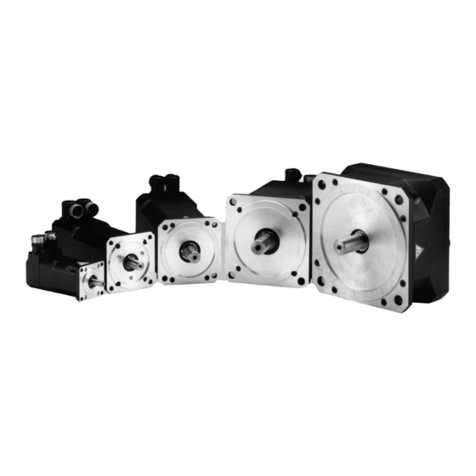
Kollmorgen Seidel
Kollmorgen Seidel DBL Series Technical description, Installation, Setup
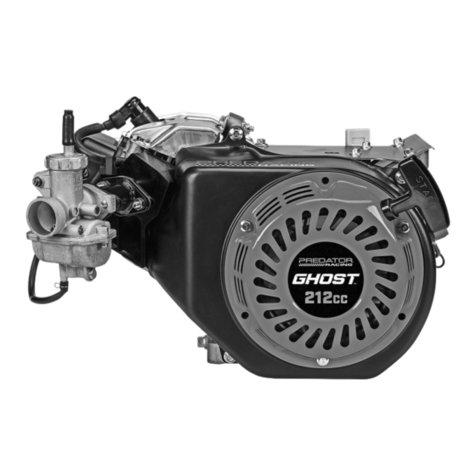
Harbor Freight Tools
Harbor Freight Tools Predicator 212cc owner's manual
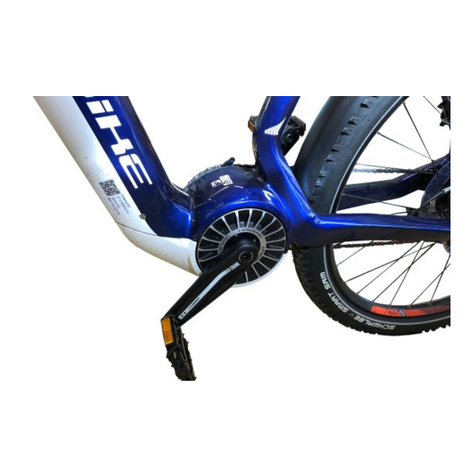
Bikespeed
Bikespeed Real Speed TQ HPR 120S Instructions for the installation and description of the functions
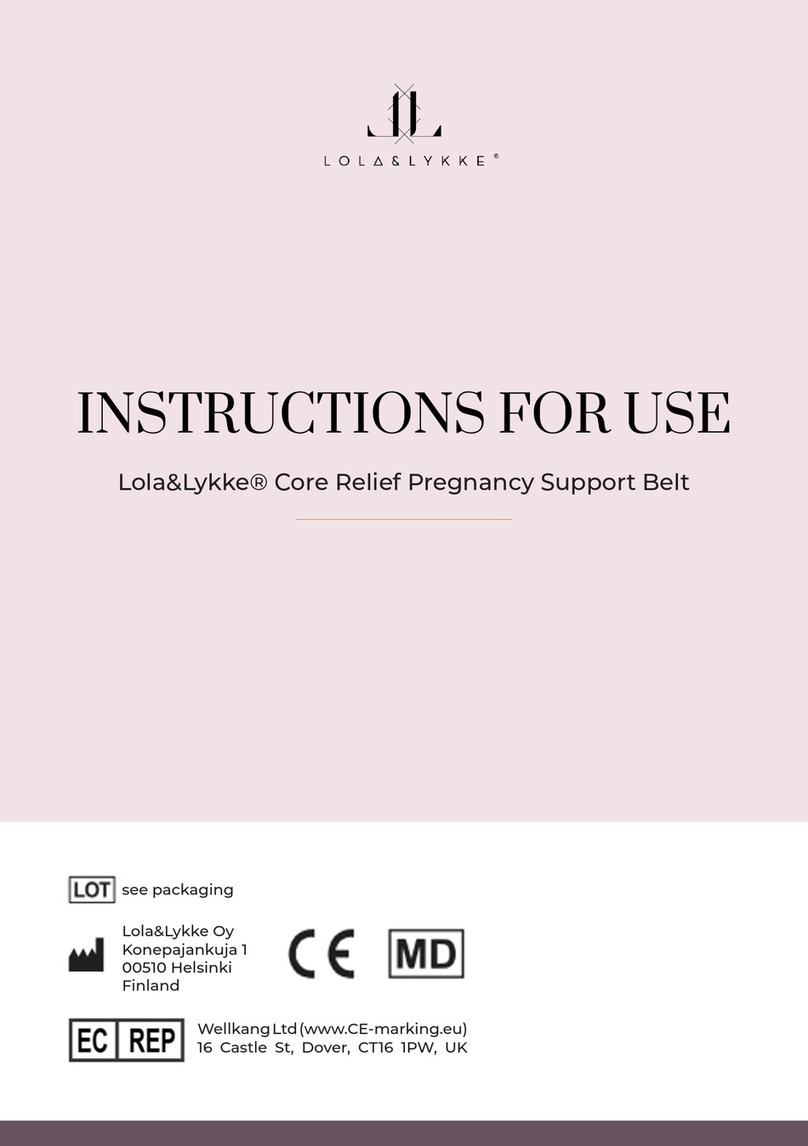
Lola&Lykke
Lola&Lykke TJ-CJ-MBB-S Instructions for use
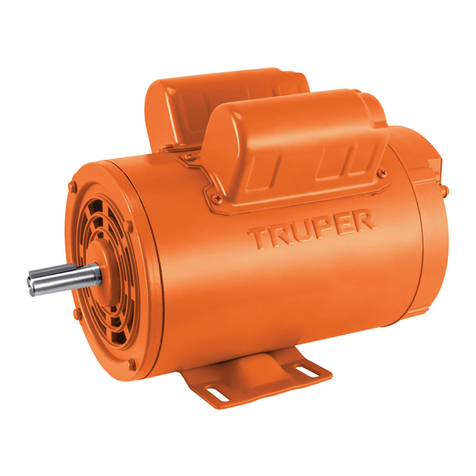
Truper
Truper MOE-2B manual
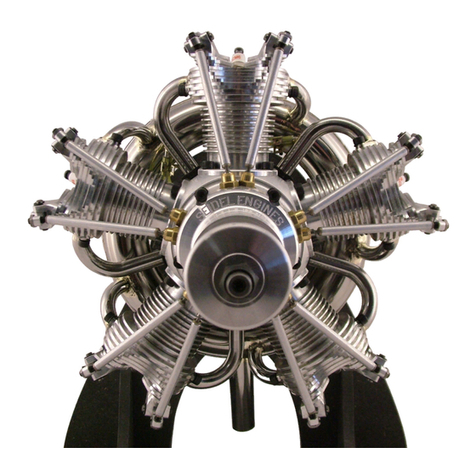
Seidel
Seidel ST 5-100 B Operation manual
